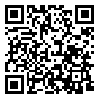Volume 12, Issue 4 (3-2014)
TB 2014, 12(4): 163-174 |
Back to browse issues page
Download citation:
BibTeX | RIS | EndNote | Medlars | ProCite | Reference Manager | RefWorks
Send citation to:



BibTeX | RIS | EndNote | Medlars | ProCite | Reference Manager | RefWorks
Send citation to:
Goli A, Shabani M, Talaie A. Comparison of Biological and Bio-electrochemical Methods to Treat Wastewater Contaminated with Formaldehyde. TB 2014; 12 (4) :163-174
URL: http://tbj.ssu.ac.ir/article-1-1725-en.html
URL: http://tbj.ssu.ac.ir/article-1-1725-en.html
, Institute of Environmental and Water Resources , atalaie@jami.ac.ir
Abstract: (5430 Views)
Introduction:Among the pollutants in waste gases, volatile organic carbons (VOCs) are very harmful for human, animals and plants. Formaldehyde is a member of VOCs family and is very toxic, mutagen and carcinogen. For removing formaldehyde, Some biological methods for treating waste gases such as bio-trickling filter reactor (BTFR) have been developed by scientists. The aim of this study was to evaluate BTFR usability for formaldehyde vapor removal.
Methods: In this study, bio-film was developed on polyethylene tubes as supporting material in BTFR. Formaldehyde removing efficiency was evaluated during three different hydraulic retention time (HRT) using a digital formaldehyde meter.
Results: The results showed that BTFR can reduce 99% of formaldehyde in hydraulic retention time equal to 126 seconds. To have the best efficiency, the optimum pH was also 5 to 8. The efficiency will decrease if bio-trickling filter is conducted on the pH less than 5. Also microbiological investigation showed that Salmonella and Serratia strains are predominant throughout the bio-trickling filter. Based on the results, an empirical model was developed to design full scale bio-trickling filter.
Conclusion: The results demonstrated that bio-trickling filter is an applicable and economic way to treat air stream contaminated by formaldehyde. Based on the importance of air pollution in the world, the results of this experiment can be used to reduce air pollution
Type of Study: Research |
Subject:
Special
Received: 2015/10/13 | Accepted: 2015/10/13 | Published: 2015/10/13
Received: 2015/10/13 | Accepted: 2015/10/13 | Published: 2015/10/13
Send email to the article author
| Rights and permissions | |
 |
This work is licensed under a Creative Commons Attribution-NonCommercial 4.0 International License. |





